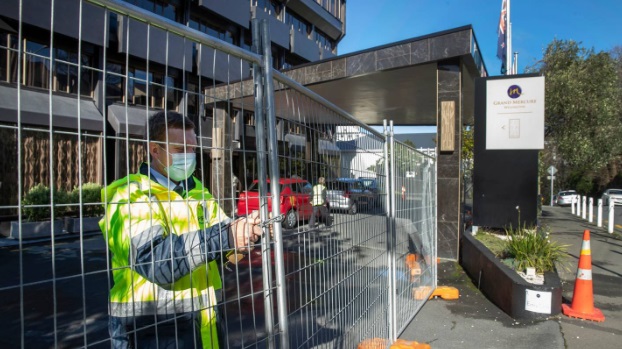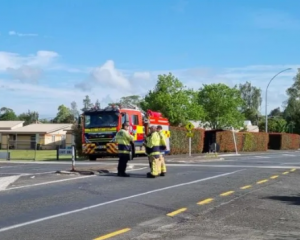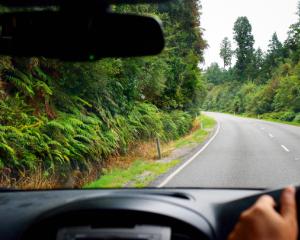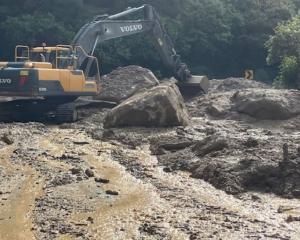
In a new analysis, Otago University researchers found that, up until March 31, there had been 14 "failures" in quarantine systems in Australia, and 10 here.
One led to an outbreak that killed an estimated 800 people, while nine resulted in lockdowns.
For both countries, the failure risk for those transiting quarantine was estimated at 6.3 failures per 100,000 travellers - and 5.8 per every 1000 positive cases of the virus.
But the failure rate per 1000 infected travellers was shown to be three-fold higher in New Zealand - or 13.2 compared with Australia's 4.1.
Further, about 55 percent of the failures could have been prevented with the full vaccination of frontline border workers, assuming the vaccine was more than 70 percent effective.
Looking forward, they said both countries might see a rise in failure risks each month.
That was because of an increasing proportion of infected travellers from overseas, and concerning new variants that had spread within Australian hotels in several instances this year.
They singled out several changes in MIQ that had tightened security - including more testing of workers, mask requirements and mass vaccinations.
But even vaccinating staff still wouldn't fully block transmission, and the experts saw a need for much wider improvements.

"Indeed, a number of Australian infectious diseases experts are calling for an end to hotel-based quarantine and are arguing for just using dedicated facilities as per the Howard Springs facility outside of Darwin."
While New Zealand has also started turning down the tap of travellers from high-risk "red zone" regions, Wilson said this still might not be enough when it came to countries whose pre-flight testing was hard to assess for quality.
"It's good that the Government is making some progress in improving border protections," he said.
"But it seems very slow at realising that we are probably going to need MIQ systems for a long time yet - possibly into 2022 - and so we should probably do it properly to virtually eliminate risk of failures that could lead to outbreaks.
"That is by establishing appropriate facilities at New Zealand military bases, or by coming to an arrangement with Australia to use part of the Howard Springs facility for returnees to New Zealand."
Elsewhere, Wilson and his colleagues said top priorities should be suspending travel from countries where the virus was out of control, expanding pre-departure testing to more countries, or even requiring a week's quarantine before travelling.
Covid-19 modeller Professor Michael Plank said that, although the failure rate between New Zealand and Australia was smaller than it was a few months ago, it was still significant.
"And although New Zealand has had a higher failure rate, Australia has experienced more lockdowns," he said.
"New Zealand has managed to contain most of its border outbreaks with just contact tracing."
Plank, of Te Punaha Matatini and Canterbury University, said it was good news such a high rate of failures could have been stopped had vaccinations been available at the time.
"But it will remain essential to keep regular testing of border workers because, although vaccination reduces the risk, there is still a risk workers could spread the virus into the wider community which is still largely unvaccinated."
A spokesperson for Covid-19 Response Minister Chris Hipkins said the border system was "serving New Zealand well", but improvements were always being considered.
"Last week, we introduced enhanced cohorting in MIQs to reduce risk and keep returnees at the start of their stay apart from those at the end, adding to earlier improvements to keep cohorts apart in MIQ and on the way to MIQ," the spokesperson said.
"We also introduced a new very high-risk country designation to further manage risk, and from [now], all workers at MIQ and those working for public sector border agencies will need to be vaccinated.
"We will continue to review all of our systems and keep improving, as we balance what's happening overseas with public safety in New Zealand, staff safety at the border and the vaccination rollout."
Meanwhile, a separate study by Te Punaha Matatini modellers found Covid-19 could be spreading within a MIQ facility if a high proportion of cases were picked up in their second week of quarantine.
The study found that the normal rate of Covid-19 cases detected in the second week was 17 percent - and if that climbed to roughly 20 percent or higher, it could mean there was transmission through the facility.
They said a significant jump in this number would signal needing to review the facility's infection prevention procedures.












